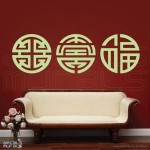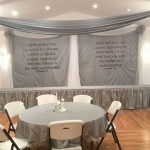How To Decorate For A Church Wedding
Decorating a church for a wedding requires a careful blend of respect for the sacred space and the couple's unique vision for their special day. The goal is to enhance the inherent beauty of the church without overwhelming its architectural integrity or violating any established rules. Thoughtful planning and execution are essential to create a memorable and reverent atmosphere.
Before commencing any decoration, consulting with the church authorities (priest, pastor, or designated wedding coordinator) is paramount. Churches often have specific guidelines and restrictions regarding decorations, including limitations on the types of flowers, the placement of adornments, and the use of candles or other potentially hazardous materials. Understanding these rules upfront will prevent misunderstandings and ensure a smooth decorating process.
The size and style of the church will significantly influence the decorations. A small, traditional church will likely require simpler, more understated decorations than a large cathedral. The architectural style, whether Gothic, Romanesque, or modern, should be considered to ensure that the decorations complement the existing aesthetics. Ignoring the church's existing style can result in a jarring and visually unappealing outcome.
Planning and Coordination
Effective planning begins with a detailed understanding of the wedding theme and color palette. The decorations should seamlessly integrate with the overall wedding aesthetic, reflecting the couple's personal style and preferences. A mood board or visual representation of the desired look can be helpful in communicating the vision to the decorating team.
Assigning specific roles and responsibilities to members of the decorating team is crucial for efficient execution. A designated team leader can oversee the entire process, ensuring that tasks are completed on time and according to plan. Clear communication and collaboration among team members are essential to avoid confusion and ensure that everyone is working towards the same goal.
Creating a detailed timeline for the decorating process is also essential. This timeline should include specific deadlines for each task, such as ordering flowers, assembling decorations, and setting up the church. Allowing ample time for unforeseen delays is always advisable. Consider the time required for both setup and takedown of the decorations, and ensure that the takedown process is respectful of the church's facilities and schedule.
Inventory management is a vital aspect of the planning process. Keep a detailed inventory of all decorations, including flowers, candles, fabrics, and any other decorative items. This will help ensure that nothing is forgotten and that all materials are accounted for after the wedding. Labeling boxes and containers clearly will also facilitate the setup and takedown process.
Floral Arrangements and Greenery
Flowers are a traditional and beautiful way to decorate a church for a wedding. The choice of flowers should be guided by the wedding theme, color palette, and the season. Seasonal flowers are often more affordable and readily available.
Altar arrangements are a focal point of the ceremony and should be carefully designed. These arrangements should be proportionate to the size of the altar and should not obstruct the view of the officiant or the wedding party. Consider using a variety of flower types and textures to create visual interest.
Pew decorations are another important element of church wedding decor. Simple pew bows or small floral arrangements can add a touch of elegance to the aisle. Ensure that the pew decorations are securely attached and do not obstruct the passage of guests. Consider using non-damaging attachment methods, such as ribbon or pew clips, rather than glue or tape.
Aisle runners can create a sense of grandeur and sophistication. Choose an aisle runner that complements the church's flooring and the overall wedding theme. Ensure that the aisle runner is securely fastened to prevent tripping hazards. Consider using double-sided tape or adhesive strips to keep the runner in place.
Greenery, such as garlands and wreaths, can add a natural and organic touch to the church. Greenery can be used to frame the altar, decorate the pews, or adorn the entrance to the church. Consider using a variety of greenery types to create visual interest and texture.
It is vital to consider the potential for allergies when selecting flowers and greenery. Opting for hypoallergenic options can prevent discomfort for guests with sensitivities. Communicating flower choices with the bridal party and close family members is also important to avoid triggering any allergic reactions during the ceremony.
Lighting and Ambiance
Lighting plays a crucial role in creating the desired ambiance for a church wedding. Natural light is often the most beautiful, but supplemental lighting may be necessary, especially in churches with limited windows or during evening ceremonies.
Candles can add a romantic and ethereal glow to the church. However, it is essential to exercise caution when using candles, particularly in areas with flammable materials. Ensure that all candles are placed in secure holders and are attended to at all times. Check with the church authorities regarding any restrictions on the use of open flames.
Consider using battery-operated candles or LED lights as a safe alternative to traditional candles. These options provide a similar ambiance without the risk of fire. Battery-operated candles are available in a variety of styles and sizes to suit different decorating needs.
Uplighting can be used to highlight architectural features of the church and create a dramatic effect. Uplighting involves placing lights at the base of walls or columns to illuminate the space from below. Choose colors that complement the wedding theme and create a cohesive look.
String lights can add a whimsical and festive touch to the church. String lights can be used to decorate the entrance, the altar, or the pews. Ensure that the string lights are securely attached and do not pose a safety hazard.
The use of spotlights can accentuate key elements of the ceremony, such as the bride and groom or the wedding officiant. However, ensure that spotlights are not too bright or distracting. The goal is to enhance the visual impact of the ceremony without overwhelming the audience.
Consider the church's existing lighting fixtures and how they can be incorporated into the overall design. Dimmers can be used to adjust the brightness of existing lights and create a more intimate atmosphere.
When planning the lighting, it's crucial to account for photography and videography. Work with the photographers and videographers to ensure that the lighting will allow them to capture high-quality images and videos of the ceremony.
In summary, decorating a church for a wedding involves careful planning, coordination, and respect for the sacred space. By following these guidelines, couples can create a beautiful and memorable atmosphere for their special day. Remember to prioritize safety, communicate effectively, and work collaboratively with the church authorities and the decorating team.

Pin On Wedding Decorations

Church Wedding Decorations Beautiful Ideas For Every Style

Church Wedding Decor Essentials To Consider

Church Wedding Decoration Ideas For Pew Aisle Altar Front

How To Decorate A Church Wedding Junebug Weddings

Ceremony Decor Styling Ideas Es Wedding Blog

Pin On Cynthia And Al S Wedding Carnival

Church Wedding Decor Ideas

26 Simple Church Wedding Decorations Ideas For 2025

Pin On Wedding Aisle







